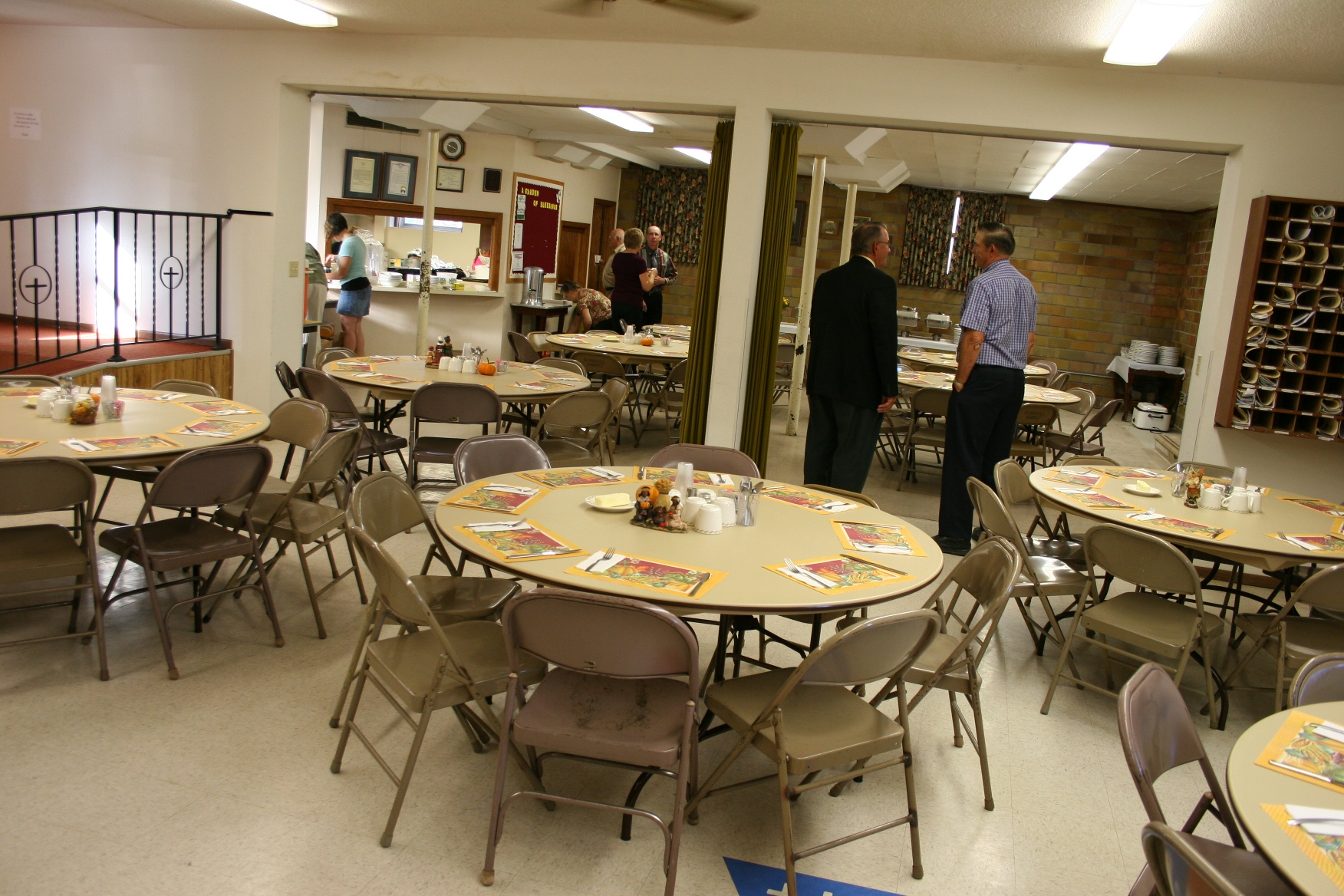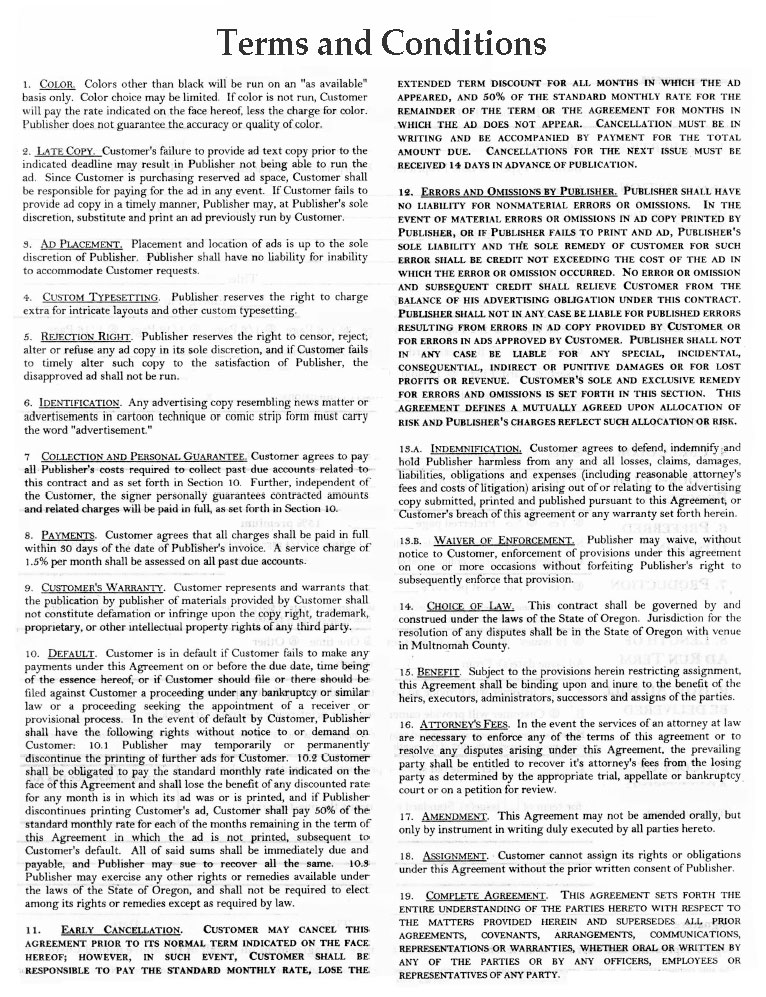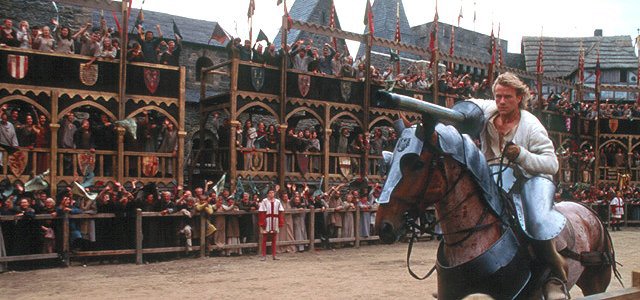I have a very mild anachronism to admit to today: this is the wrong day to post this carol. I know, it sounds like exactly what you'd expect to hear a choir processing into a church for a Christmas Eve service. And this song is quite Christmas-y, relatively obscure, and overall easy to digest. So what's wrong with it? Well, "See Among the Winter's Snow" is widely known throughout England as "Hymn for Christmas Day." You will note, if you're very observant, that today is December 22. So I'm a few days early on this one, knowing its colloquial title, but don't worry-- I'm saving my very favorites for the remaining three days. Not that this isn't a good one, but as I'll discuss, and though I've never heard it before this year, for some reason it brings back memories of Protestant church basement dinners.
Commandment XI: Thou shalt have a drab fellowship hall that
smelleth of floor wax and burnt coffee.
Like I said, this song fits the bill nicely for my purposes, and is far from poorly written. It even has all the hallmarks of a 19th century hymn: a nice, even tempo, no long minors or cliffhangers, 4/4 time, and scale-downs into resolves at the end of every verse. You don't exactly have to be Mozart to pick this (or many of the hymns nearly identical to it) apart theoretically. And that's exactly the source of the love/hate relationship I'm experiencing with it-- it's too familiar. It seems like everything I awkwardly stood silently for while going to Sunday service as a kid. And yet, at the same time, this sort of hymn occupies so much of even a modern hymnal that you can scarce discuss any sort of religiously-influenced music without mentioning it. So here it is, my one mention of the simplistic style of church music that dominated the 19th century church, and, much like powdered mashed potatoes and dried-out ham, dominate traditional religious choral music to this day. There, you've had my disclaimer.
Just click "Accept" and continue.
Alright, so down to the nitty gritty. I've established that we're dealing with a 19th century carol and that it's English in origin, but it's back story is a bit more fun than the nature of the tune would imply. As was common of many hymns of the time, and as noted in previous posts on this blog, the lyrics and tune of a hymn were often written separately by different people. Such is the case with "See Amid the Winter's Snow": the tune was written by organist Sir John Goss, and the lyrics by the not-nearly-as-knightly Edward Caswall. Caswall, an Oxford man in the parlance of the times, converted from Protestantism to Catholicism in 1847 at the age of 33. Despite his very classical English education, this was as good as an act of war against one's family name, even into the 20th century. As if that weren't enough to do his good English name in, he was also the son of an Anglican pastor.
Still not one of these, though.
Though his original poem "See Amid the Winter's Snow" lacks a date of origin, it's original year of publication was 1858, so he wrote this one shortly after his conversion. Sir John Goss composed the tune he titled "Humility" in 1871 specifically for Caswall's poem, now hymn given its musical accompaniment. It's worth noting, at least to me, that the recording at the top was made in St. Paul's Cathedral, London, which is where Goss was musical director at the time of his composition. For all intents and purposes, though, that's where the fun ends and the church basements begin. Not that there's anything wrong with them, or this song I'll reiterate, but they don't command my fondest memories. But I'll also reiterate that I think this song--really, this style of hymn-- is important to include in my list because of its prevalence in hymnals to this day.



No comments:
Post a Comment